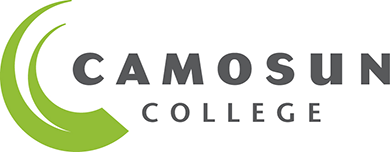Making a healthy difference in Canada and the world
Archived Content
This archived web page remains online for reference, research or record-keeping purposes. This page will not be altered or updated and may contain out of date information. If you’re looking for specific information and haven’t found it, please contact communications@camosun.ca.
February 27, 2009
The overall health of British Columbia’s aging population is a good news, bad news story. The good news is that we know a great deal about the kind of lifestyle changes necessary to prevent or at least manage chronic disease: regular exercise, a healthy diet, no smoking and weight loss are all important. The bad news lies in the difference between knowing what we should do to stay healthy, and actually doing it.
Camosun College’s new Athletic and Exercise Therapy (AET) degree is aimed at dealing with this good news/bad news problem. The AET degree includes a strong core curriculum in sport sciences, rehabilitation skills and medical fitness. It’s designed to assist students in learning about the prevention and management of chronic disease and the preclusion, immediate care, and rehabilitation of musculoskeletal injuries that can keep people from active lifestyles.
Why is this a big deal? The World Health Organisation estimates that 90% of all deaths in Canada are caused by chronic disease. As we move into 2009, cardiovascular diseases (coronary artery disease, hypertension, stroke, and heart failure), Type 2 diabetes, metabolic syndrome, and cancer are already the leading killers in Western society, and they are all increasing dramatically in developing nations.
Camosun College wants to make a healthy difference in British Columbia, which means addressing the enormous impact of chronic disease. At the start of this new year, 80% of British Columbians over 65 have at least one chronic disease, and 70% have two or more. In raw numbers, there are 1.6 million instances of chronic diseases distributed among 4.1 million British Columbians, 30,000 of which are diagnosed in those under 20 years old. Evidence suggests that in some cases, exercise therapy is just as effective as medical intervention in treating a large number of medical disorders including diabetes, heart disease, osteoporosis, obesity and asthma.
The new AET degree is both innovative and unique. Its innovation lies in the combination of two traditionally excusive disciplines: athletic therapy and exercise therapy into one comprehensive curriculum that addresses two major challenges in Canada: chronic disease and sedentary lifestyles. Its uniqueness comes from being the only program of its kind in British Columbia, and one of only six across Canada.
The AET degree program will also serve the need for a western Canadian Athletic Therapy Association (CATA) accredited institution. CATA grants certification to Athletic Therapists, and the Canadian Society for Exercise Physiology sets the national standards for graduates of exercise science-related degree programs to become certified Exercise Physiologists. When fully accredited, Camosun’s AET will be the only accredited degree program west of Calgary, and one of only two institutions west of Manitoba, (out of a total of six national institutions).
British Columbia must meet the challenge of chronic disease. The provincial government’s goals to provide quality health care services and to lead North America in healthy living and active lifestyles are an excellent start. Camosun College’s Athletic and Exercise Therapy degree program will help us get out of the starting blocks and translate those goals into reality. Our students will be part of the solution to resolving the good news/bad news problem – which is great news.
Interested in making a healthy difference?
Find out more about Camosun's Sport & Exercise Education programs online at camosun.ca/sported or contact us at 250-220-2566 or sported@camosun.bc.ca.
Last updated: February 27, 2009 11:37 am


